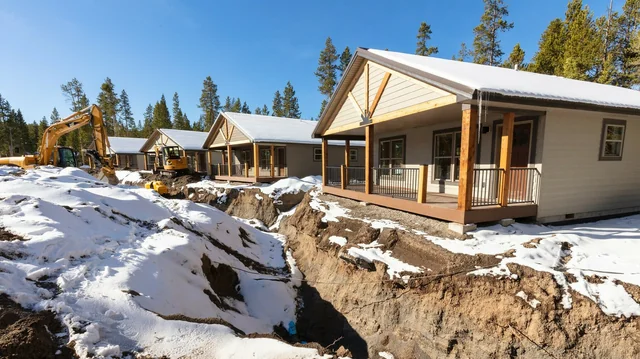In the realm of national parks, Yellowstone stands as a beacon of natural wonder. But behind the breathtaking vistas and geothermal marvels lies a pressing issue: a scarcity of housing for its dedicated workforce. Yet, a recent anonymous donation of $40 million promises to breathe new life into Yellowstone’s employee housing landscape, marking a significant stride towards alleviating this persistent challenge.
The National Parks Foundation recently unveiled this game-changing contribution, aimed squarely at ameliorating the housing shortfall within Yellowstone National Park. With plans to channel these funds into the creation of 70 modern housing units within the park’s boundaries, the initiative holds promise for addressing a dire need.
For years, Yellowstone has grappled with housing shortages, compounded by concerns over aging infrastructure. In response, the park launched a comprehensive housing improvement program in 2020, targeting the replacement of outdated trailers with cozy cabins and the refurbishment of existing units. This undertaking, with an estimated price tag of $39 million, laid the groundwork for revitalizing Yellowstone’s residential landscape.
Cam Sholly, Yellowstone’s superintendent, underscored the pivotal role of adequate housing in sustaining a vibrant workforce. “Our ability to attract and retain talent in Yellowstone is strongly tied to the availability and affordability of housing options,” remarked Sholly in a recent statement.
During peak seasons, the park teems with approximately 3,000 employees, yet suitable housing options within its confines remain scarce. Consequently, half of the workforce finds itself compelled to seek accommodation in neighboring towns, facing exorbitant costs and lengthy commutes. This predicament not only breeds frustration among employees but also hampers the park’s efforts to retain top-tier personnel.
The housing crisis extends beyond park employees, encompassing local contractors and essential service providers vital to the park’s operation. Their struggles to secure affordable housing pose a threat to the park’s maintenance and upkeep, potentially impeding critical repair efforts.
Addressing Yellowstone’s housing woes presents a multifaceted challenge, with proposed solutions ranging from regulatory adjustments to zoning reforms. However, the recent infusion of $40 million offers a beacon of hope, signaling a tangible step towards resolution.
Yellowstone’s plight mirrors a broader trend plaguing national parks nationwide, with Acadia, Yosemite, and Grand Teton among those grappling with similar housing shortages. According to Will Shafroth, President and CEO of the National Park Foundation, addressing these housing deficits collectively demands an investment of approximately $115 million.
In the words of Shafroth, “You can’t attract a good workforce if they don’t have a good place to live.” Indeed, the individuals who safeguard our national treasures deserve housing that reflects their dedication and professionalism—a sentiment echoed by many who recognize the invaluable contribution of park personnel to the preservation of our natural heritage.

